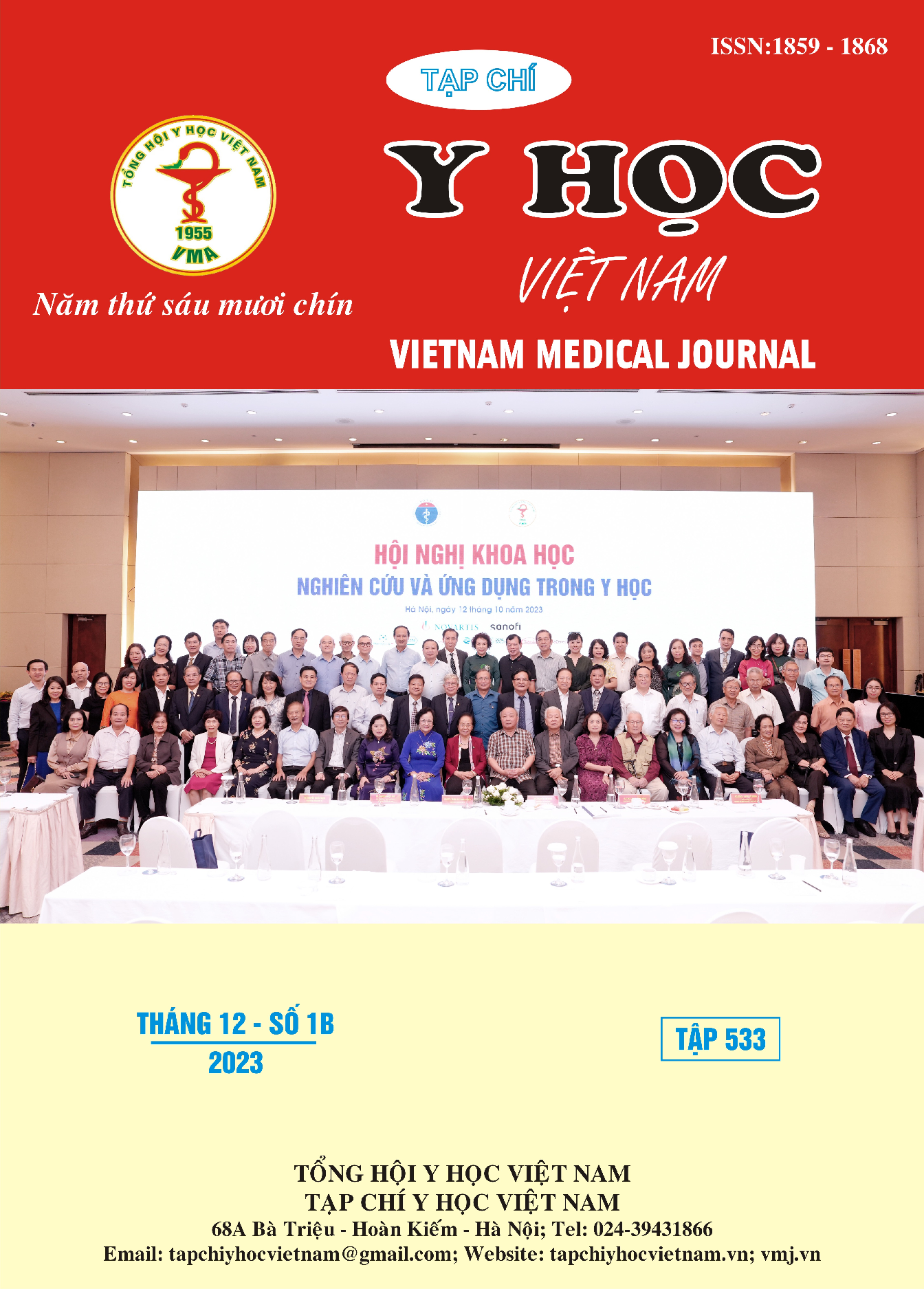OUTCOME OF ENDOVASCULAR REPAIR FOR THE TREATMENT OF INFRARENAL ABDOMINAL AORTIC ANEURYSMS AT CHO RAY HOSPITAL
Main Article Content
Abstract
Background: Endovascular intervention for the treatment of abdominal aortic aneurysms (EVAR) is a novel method with numerous advantages over open surgery, particularly in elderly patients with multiple risk factors. Objective: To evaluate the outcomes of abdominal aortic aneurysm treatment at Cho Ray Hospital. Patients and methods: This was a descriptive cross-sectional study, combining retrospective and prospective data, conducted from June 2016 to December 2018 in the Vascular Surgery Department at Cho Ray Hospital. Results: The study included a total of 82 patients, with an average age of 73.7 ± 7.1 years, of which 64 were male. Hypertension was present in 65.9% of patients, and 69.5% were smokers. Coronary artery disease was observed in 53.7% of cases. The average length of the proximal neck was 30 ± 11.1 mm, the diameter of the proximal neck was 18.5 ± 3.2 mm, the angulation of the neck was 61.5 ± 20.3 degrees, and the mean aneurysm sac diameter was 52.25 ± 11.27 mm. The average length of the infrarenal aorta to the bifurcation was 110 ± 18.2 mm. Most procedures were elective (96.3%). Local anesthesia was the primary method of anesthesia (43.9%). Simple endovascular graft placement in the aneurysm sac was performed in 4.9% of cases, bilateral iliac artery extension in 84.2%, unilateral iliac artery extension in 11%, and block of the internal iliac arteries in 25.6% of cases. Type II endoleak was the only type and accounted for 17.1% of cases, with 3 patients experiencing mortality during follow-up. The short-term and midterm success rates were 98.7% and 96.3%, respectively. Conclusion: Endovascular intervention for the treatment of abdominal aortic aneurysms is an effective, low-complication method with rapid recovery. It is particularly suitable for elderly patients with multiple risk factors and comorbidities.
Article Details
References
2. Rossi UG, Torcia P, Dallatana R, Santuari D, Mingazzini P, Cariati M. Abdominal aorta aneurysm with hostile neck: Early outcomes in outside instruction for use in patients using the treovance(®) stent graft. Indian J Radiol Imaging. Oct-Dec 2017;27(4):503-508. doi:10.4103/ijri.IJRI_290_16
3. Buck DB, van Herwaarden JA, Schermerhorn ML, Moll FL. Endovascular treatment of abdominal aortic aneurysms. Nature Reviews Cardiology. 2014/02/01 2014;11(2):112-123. doi:10.1038/nrcardio.2013.196
4. Brown LC, Powell JT, Thompson SG, Epstein DM, Sculpher MJ, Greenhalgh RM. The UK EndoVascular Aneurysm Repair (EVAR) trials: randomised trials of EVAR versus standard therapy. Health Technol Assess. 2012;16(9):1-218. doi:10.3310/hta16090
5. De Bruin JL, Baas AF, Buth J, et al. Long-term outcome of open or endovascular repair of abdominal aortic aneurysm. N Engl J Med. May 20 2010; 362(20): 1881-9. doi:10.1056/ NEJMoa0909499
6. Becquemin JP, Pillet JC, Lescalie F, et al. A randomized controlled trial of endovascular aneurysm repair versus open surgery for abdominal aortic aneurysms in low- to moderate-risk patients. J Vasc Surg. May 2011;53(5):1167-1173.e1. doi:10.1016/j.jvs.2010.10.124
7. Lederle FA, Freischlag JA, Kyriakides TC, et al. Long-term comparison of endovascular and open repair of abdominal aortic aneurysm. N Engl J Med. Nov 22 2012;367(21):1988-97. doi:10.1056/NEJMoa1207481
8. Lederle FA, Johnson GR, Wilson SE, et al. The aneurysm detection and management study screening program: validation cohort and final results. Aneurysm Detection and Management Veterans Affairs Cooperative Study Investigators. Arch Intern Med. May 22 2000;160(10):1425-30. doi:10.1001/archinte.160.10.1425
9. Jahangir E, Lipworth L, Edwards TL, et al. Smoking, sex, risk factors and abdominal aortic aneurysms: a prospective study of 18 782 persons aged above 65 years in the Southern Community Cohort Study. J Epidemiol Community Health. May 2015;69(5):481-8. doi:10.1136/jech-2014-204920


